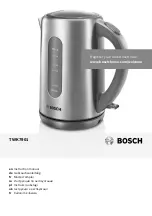
10-54
KDFX Reference
KDFX Algorithm Specifications
In the stereo Chorus 1 and Chorus 2, the relative phases of the LFOs modulating the left and right channels
may be adjusted.
Figure 10-17
Delay for a Single LFO
The settings of the LFO rates and the LFO depths determine how far the LFOs will sweep across their
delay lines from the shortest delays to the longest delays (the LFO excursions). The Tap Delays specify the
average amount of delay of the LFO modulated delay lines, or in other words the delay to the center of the
LFO excursion. The center of LFO excursion can not move smoothly. Changing the center of LFO
excursion creates discontinuities in the tapped signal. It is therefore a good idea to adjust the Tap Dly
parameter to a reasonable setting (one which gives enough delay for the maximum LFO excursion), then
leave it. Modulating Tap Dly will produce unwanted zipper noise. If you increase the LFO modulation
depth or reduce the LFO rate to a point where the LFO excursion exceeds the speci
fi
ed Tap Dly, the center
of LFO excursion will be moved up, and again cause signal discontinuities. However, if enough Tap Dly is
speci
fi
ed, Depth and Rate will be modulated smoothly.
As the LFOs sweep across the delay lines, the signal will change pitch. The pitch will change with a
triangular envelope (rise-fall-rise-fall) or with a trapezoidal envelope (rise-hold-fall-hold). You can choose
the pitch envelope with the Pitch Env parameter. Unfortunately rate and depth cannot be smoothly
modulated when set to the “Trapzoid” setting.
Figure 10-18
Pitch Envelopes (i) Triangle and (ii) Trapzoid
Parameters for Chorus 1
Page 1
Wet/Dry
-100 to 100%wet
Out Gain
Off, -79.0 to 24.0 dB
Fdbk Level
-100 to 100%
Xcouple
0 to 100%
HF Damping
16 Hz to 25088 Hz
Pitch Env
Triangle or Trapzoid
Tap Dly
Delay Input
Shortest
Delay
Longest
Delay
Center
of LFO
LFO Xcurs
LFO Xcurs
Range of LFO
(i)
(ii)
P
it
c
h
Time
Time
Summary of Contents for K2661
Page 18: ...2 4 LFOs LFO Shapes...
Page 34: ...3 16 DSP Algorithms...
Page 54: ...5 4 MIDI Note Numbers Note Numbers for Percussion Keymaps...
Page 72: ...7 10 System Exclusive Protocol K2661 System Exclusive Implementation...
Page 82: ...9 4 Upgrading Sample Memory Choosing and Installing a SIMM for K2661 Sample Memory...
Page 334: ...10 252 KDFX Reference KDFX Algorithm Specifications...
Page 340: ...11 6 Glossary...
Page 382: ...12 42 Triple Modular Processing Alphanumeric Buttonpad Entries for DSP Functions...
Page 392: ...B 6 SysEx Control of KDFX MSB and LSB...
Page 442: ...D 20 Contemporary ROM Block Objects Controller Assignments Contemporary ROM Block...
Page 490: ...H 12 General MIDI Standard Mode Controller Assignments...
Page 492: ...I 2 Live Mode Objects Live Mode Programs...
Page 498: ...K2661 Musician s Reference Index...
Page 500: ......
















































